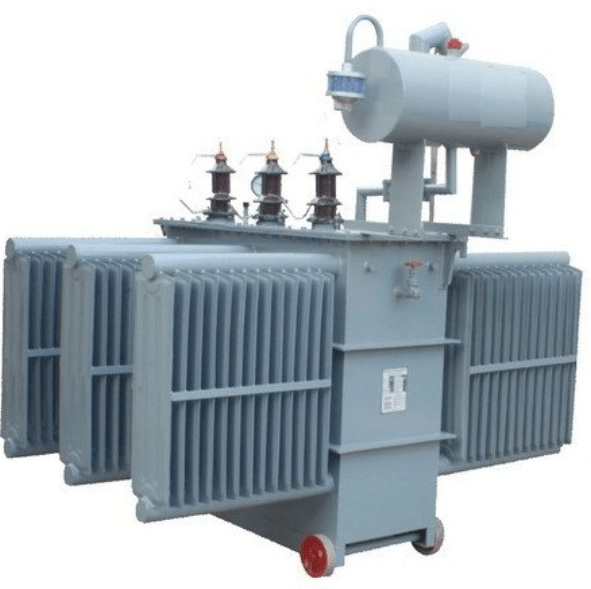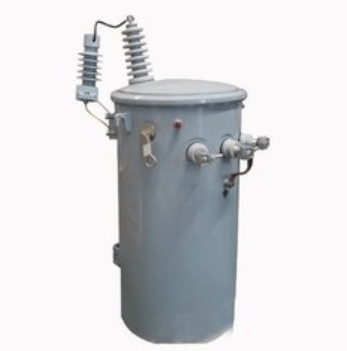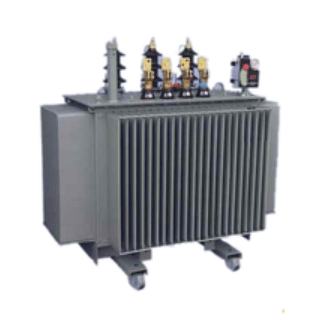The men behind the invention of the transformer are William Stanley, Lucien Gaulard and Sebastian and employed the device for both commercial and practical applications. Then, the modern type of transformer was invented in the year 1886 where this used AC power as the power source. Ranging from radio systems to microelectronics, these transformers are extensively utilized from the time of their invention. The presentation of the distribution transformer happened in the year 1886 itself where this used complete alternating current as a power system. So, today let’s focus on the distribution transformer and its concepts.
What is the Distribution Transformer?
We all know that the output of a distribution substation ranges from 4,000 to 36,000 volts. So for some conventional issues, these voltage ranges are too high and it is necessary to step down the levels. And the one kind of transformer which satisfies this requirement is the distribution transformer.
These distribution transformers come under the classification of electrical isolation transformers which transform extended voltage levels to minimal levels. In general, this device steps down the voltage range to almost 240 volts which are required for households and other small businesses. The device functions in a completely straight forward path to offer isolation in between the windings. To handle the voltage levels, electrical energy is allowed to pass through these devices. The distribution transformer diagram is shown as:

distribution-transformer
Properties
Few of the properties in distribution transformer are stated as:
- Mostly implemented for low voltage applications which is a minimum of 33 kV and used as a step-down transformer
- Minimal in size
- Functions at either 60-70 percent of the whole load all over the day
- Needs only 3-5 points for tap charger
Distribution Transformer Construction
These transformers are constructed as similar to that of minimally sized transformers. Most of these devices make use of either E or C shaped core material which are made of either laminated sheets, steel straps or liquid bones which are glued. The minimal current and high voltage sides are protected with copper-coated windings whereas the low voltage and high current sides are protected with aluminum or resin twisted paper which is of copper insulated. The entire assembly is made to patch up the resin bindings and then soaked in a powder smeared steel tank. Later the tank is filled up with highly concentrated mineral oil which is of inert in nature as well as non-conductive. Mineral oil is used to dissipate heat and to safeguard the device from any kind of damages those reside on the mineral oil surface. So, to remove moisture, the tank is made to be under depressure and this develops arcing. Finally, on the topmost surface of the tank, a gasket is placed to let it be safe from abnormal weather conditions.
Types
These devices are classified upon the factors like
- Mounting position
- Kind of insulation used
- Number of phases it is operated
- Type of voltage level
Few of types of distribution transformer are stated as below:
Pole Mounted Distribution Transformers
Distributed transformers are stated as pole-mounted when the transmission lines are positioned above the ground and are of a single phase. Mostly these kinds of transformers are employed for household applications because they can hold the ability to convert the voltage range to 120 or 240 volts.

pole-mounted- distribution-transformer
Few of the properties of this kind are:
- Very minimal size and installation is streamlined and this allows that the device can be either mounted on single and dual pole structures
- Voltage level range from 11,000 to 33,000 volts
- As these are positioned nearly 5 meters above the ground, there happens no damage to animals and people who are walking.
- These devices can handle complicated atmospheric conditions
- The shape of these transformers decreases water storage
- Tanks are constructed of zinc in coastal locations whereas, in extensive corrosive locations, these are constructed of steel material.
Pad-Mounted Distribution Transformers
Distributed transformers are stated as pad-mounted when the transmission lines are positioned under the ground. When there exists no place for a fenced compound, then people go with the option of implementing pad-mounted transformers. These have an enclosed steel closet that is placed on a pad made of concrete material. Enclosed construction in these devices allows no access to the running internal parts. The enclosure might consist of isolating switches, bushings, fuses, and others. The voltage levels in this kind of devices range from 100 – 2000 kVA. A single pad-mounted transformer can serve the need of many homes mostly an apartment.

pad-mounted- transformer
The other kinds of distribution transformers are single-phase and three phases.
Distribution Transformer Connections
The connection of this device varies based on the type of distribution transformer that is used. Single-phase transformers are constructed either with one or two bushings and they are connected in wye shape. These primary bushings also can be utilized with four-wire or three-wire wye connections only when they are connected in a proper way.
And also, these single-phase transformers are connected to the overhead wires in two methods and those are:
- Wye – Here a phase to neutral kind of transformer is utilized. It has a top bushing where it has a connection with either of the phases. The other side of the winding is connected to the neutral wire and it is grounded. A wye connection is chosen because unstable loads might cause currents in the neutral side and with this connection, those have a direction towards the ground. Whereas in the delta connection, the unstable loads develop voltage variations on the three-phase wires.
- Delta – Here a phase to phase kind of transformer is utilized. It has two bushings where these have a connection with two of the phases. The other side of the winding is connected to the neutral wire and it is grounded. The drawback that happens in this connection is that when any one of the primary phases goes under de energy state, the other phase will cause movement of current in a reverse direction and this might impose serious damages to the staff and workers.
Uses of Distribution Transformer
A few of the applications of distribution transformer to be discussed are as follows:
- Distribution transformers are extensively used for household applications where they can be employed in umping stations, separated houses and farmyards.
- They can be implemented in railway systems powered up with alternating current
- Used in power collector networks
Apart from these, there are many other applications to know.
FAQs
1). What kind of transformer is used in distribution?
In general, a step-down transformer is used.
2). What are the basic kinds of distribution transformers?
The basic kinds are low or medium voltage ranges, single or three-phase and liquid or oil insulated transformers.
3). What are the losses in the distribution transformer?
The losses are copper and hysteresis losses.
4). How efficiency is calculated in these transformers?
The efficiency is calculated by comparing output and input ratings in kWh.
5). What is the variation between power and distribution transformer?
A power transformer is used for high range voltages and distribution for the low range of voltages.
Please refer to this link to know more about Core Transformer MCQs, Transmission Distribution MCQs.
As many domestic and business industries are using these transformers, there seems no stop for the development of distribution transformers. The progression of this device has going on day by day and businesses are gaining benefits with the implementation of these devices. So, it is more required to know more about what are the other advantages of using a distribution transformer?